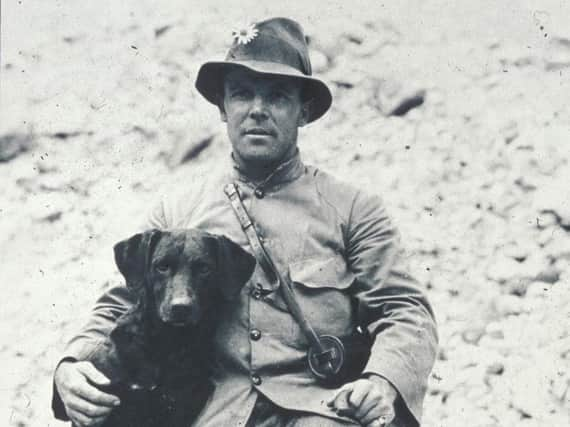Letter tells the dramatic escape of Scottish 'Indiana Jones' from Tibetan monks


One of Scotland's greatest plant hunters, George Forrest was on his first expedition in July 1905 when he was reported dead - murdered by Tibetan monks slaughtering Christians on a rampage through the remote mountains of southwest China.
Friends of the Falkirk-born scientist had already begun mourning him when he wrote to bosses at the Royal Botanic Gardens in Edinburgh, telling of his dramatic escape.
Advertisement
Hide AdAdvertisement
Hide AdFrom surviving a hail of arrows that pierced his hat, to being hunted day and night over mountain terrain, to the news that the elderly priests who sheltered him were beheaded, the extraordinary document details his journey in his own words.
The ten page letter, including a hand-drawn map of his route, was archived for more than a century. It will be displayed at the RBGE until October 1 - exactly 114 years after it was written.
Archivist Leonie Paterson said: "When news reached home that he had been murdered, his death was mourned until a telegram arrived announcing him 'alive and safe'.
"A few months later this letter, addressed to Isaac Bayley Balfour, the Regius Keeper, arrived and Forrest told his tale for the first time.
"We talk about Forrest’s incredible story, but it is undoubtedly best told in his own words. By going back to this original letter, he comes back to life."
Forrest, who was then 32, was in Yunnan province on the Tibetan border when the drama unfolded.
But as he set about collecting plants and seeds in the valleys of the Mekong river, around 100 Buddhist lamas and their supporters, incensed at a Chinese government decision allowing missionaries into the province to convert people to Christianity, began a horrific killing spree.
Brutal reprisals saw westerners including Christian priests - and any Chinese or Tibetan converts --murdered.
Advertisement
Hide AdAdvertisement
Hide AdHe and his hosts -- two elderly French priests -- fled in to the mountains. But Forrest's devotion to bringing his plant collection back with him nearly cost him his life.
While members of his group were tracked and massacred after being betrayed by a local chief, he alone evaded capture during three weeks on the run.
Forrest discarded his boots to avoid leaving tracks, and covered miles barefoot at night, using the moon to light his way.
For the first eight days, he survived on just a few ears of wheat, and slept in muddy hollows.
Once he was awakened by the sound of his hunters laughing only yards away. On another occasion, he rounded a bend to find seven pursuers "armed to the teeth" in front of him.
Eventually, starving and exhausted, he was helped by an indigenous tribe who risked their own lives to spirit him to safety, disguised as a local.
In his letter, Forrest explains how he was separated from the French priests, writing: "The last I saw of Père Dubernard he was flying up stream towards the main range, Père Bourdonnec fled straight up hill south of the stream... That frightful race I shall never forget, and how I escaped death I cannot say."
He was later devastated to discover their fates: "It appears that Père Bourdonnec was cornered some time during the second day, shot down, and whilst still alive, cut open and his heart torn out.
Advertisement
Hide AdAdvertisement
Hide Ad"Père Dubernard managed to elude his pursuers until the fourth or fifth day, when he was captured. The lamas broke both his arms, above and below the elbows, tied his hands behind his back, and then led him off in the direction of Tsekou.
"However he became so exhausted, that he begged them to kill him at once, on which one of them struck him down with a sword.
"He was then cut open, and his heart extracted before death. Both bodies were beheaded, and all the parts carried north. Had I been captured I should have been similarly treated."
Forrest hiked to altitudes of 17,000 ft (5200m), and despite his ordeal managed to gather some tiny samples of unknown plants, which he stuffed in to his pocket book.
In his letter, he spoke of one day returning to the area: "Under more congenial circumstances I should have thoroughly enjoyed the journey.
"The flowers I saw were really magnificent, in fact, so fine were they, that I have decided to run the risk of going back next year."
Miss Paterson said: "Despite his terrifying experiences, he stayed on and became one of Scotland’s most prolific plant collectors. Moreover, after returning to Scotland he took part in six more expeditions to Yunnan Province.
* The letter will be displayed in a case in the RBGE library foyer from Monday until October 1, including Saturday September 28, when the Garden is participating in Doors Open Day.
